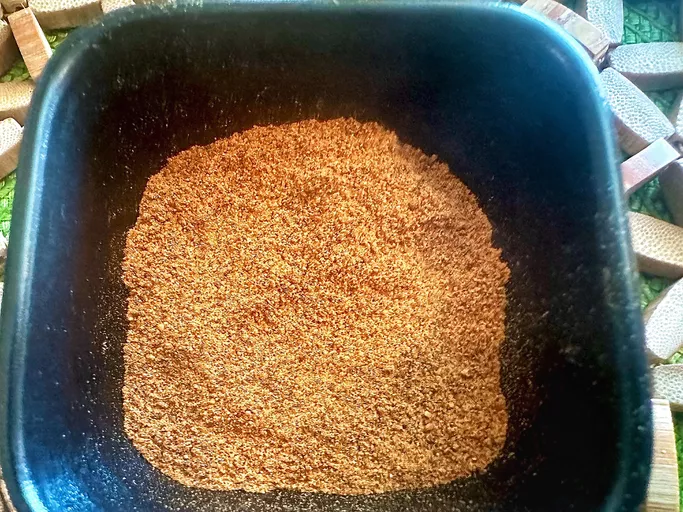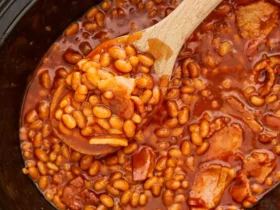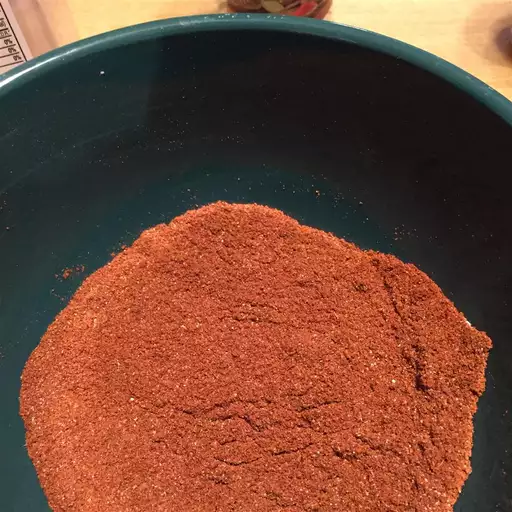What is Berbere?
Origin and History
- Berbere, also known as Ethiopian chili powder, is a complex spice mix originating from Ethiopia, with its roots dating back thousands of years to the ancient Kingdom of D’mt.
- The name “Berbere” is believed to be derived from the Amharic word for “red pepper,” which is a core component of the spice blend.
- Traditionally, Berbere is made by hand using a combination of spices and herbs carefully selected for their unique flavors and aromas.
- The exact composition of Berbere can vary depending on the region and personal preference, but it typically includes chili peppers, garlic, ginger, coriander, cumin, fenugreek, nutmeg, cardamom, cinnamon, cloves, allspice, and turmeric, among others.
- The proportions of these ingredients also differ significantly between households and regions, with some recipes including as few as 5-6 spices or as many as 20 or more.
- One characteristic common to most Berbere recipes is the use of chili peppers as a base ingredient, which gives the spice mix its distinctive heat and flavor.
- The process of making Berbere typically begins with roasting the ingredients, usually in small batches over an open flame or using a dry pan, to bring out their full flavors and aromas.
- Once roasted, the ingredients are ground into a fine powder using a mortar and pestle, traditional grinding stones, or even electric grinders.
- The resulting Berbere is then mixed with other spices and herbs to create the distinctive blend that has become synonymous with Ethiopian cuisine.
- Berbere plays a central role in many traditional Ethiopian dishes, including stews (wots), salads (tibs), and flatbreads (injera).
- It adds depth, warmth, and heat to a variety of dishes, making it an essential component of the country’s culinary identity.
- The unique flavor profile and versatility of Berbere have made it popular not only in Ethiopia but also around the world, where it is often used as a spice blend or incorporated into various recipes for its distinctive flavor and aroma.
Berbere is a traditional Ethiopian spice blend that has been a staple in the country’s cuisine for centuries. It originated from the Oromo people, who are the largest ethnic group in Ethiopia.
- Berbere is a traditional Ethiopian spice blend that has been a staple in the country’s cuisine for centuries.
- The name “Berbere” is derived from the Oromo word “berbere,” which means “burnt” or “charred.”
- This flavorful blend of spices originated from the Oromo people, who are the largest ethnic group in Ethiopia.
- Berbere is a key component in many traditional Ethiopian dishes, including stews, soups, and sauces.
- It typically contains a combination of red chili peppers , garlic, ginger, coriander seeds, cumin seeds, fenugreek, turmeric, cinnamon, cardamom, cloves, nutmeg, and salt.
- The spices are usually toasted or roasted to bring out their unique flavors and aromas before being ground into a fine powder.
- Berbere has a distinctive smoky and slightly sweet flavor profile that is characteristic of Ethiopian cuisine.
- The spice blend is often used as a rub or seasoning for meats, such as lamb or chicken, and is also added to vegetable dishes for extra flavor.
- Berbere is an essential component in many traditional Ethiopian recipes, including the country’s national dish, tibs , which consists of sautéed meat in a spicy Berbere sauce.
- In addition to its use as a spice blend, Berbere is also used as a colorant and thickening agent in some Ethiopian dishes.
- The unique flavor and aroma of Berbere have made it a beloved ingredient in many parts of the world, particularly among fans of African cuisine.
Ingredients and Composition
Main Components and Variations
The composition of Berbere spice, also known as Ethiopian spice mix or mitmita, is a blend of various spices and ingredients that may vary slightly depending on regional traditions and personal recipes.
However, the main components of traditional Berbere spice typically include chili peppers, garlic, ginger, coriander seeds, cumin seeds, caraway seeds, fenugreek seeds, cinnamon sticks, cardamom pods, turmeric powder, black pepper, salt, and occasionally, allspice or cloves.
The primary ingredient in Berbere is usually a combination of chili peppers, which provides the distinctive heat and flavor to the blend. The most common types of chilies used are African bird’s eye chilies (also known as peri-peri), habanero, or scotch bonnet peppers, but other varieties like cayenne pepper can also be used.
Other ingredients, such as coriander seeds and caraway seeds, add depth and warmth to the mix. Coriander has a slightly sweet, citrusy flavor, while caraway seeds have a nutty, earthy taste. Fenugreek seeds contribute a distinct bitterness and earthiness to Berbere.
Fresh or dried ginger is often included for its aromatic properties and warm, spicy flavor. Cinnamon sticks add a sweet, woody aroma, and cardamom pods provide a unique, slightly sweet, and herbal taste.
Turmeric powder provides the mix with its characteristic bright yellow color and slightly bitter, earthy flavor. Black pepper adds depth and heat to Berbere, while salt enhances the overall flavor balance. Allspice or cloves can be added for their warm, sweet spices and aromatic properties, respectively.
The ratio of these ingredients may vary depending on personal taste preferences, regional traditions, and intended uses of the spice blend. Some people prefer a milder Berbere with less chili peppers, while others enjoy a spicier mix with more chilies and less cumin or coriander seeds.
Additionally, variations in Berbere can be achieved by using different types of oil or fat to grind the spices together, such as ghee, vegetable oil, or even peanut butter. The texture and flavor of the blend may also change depending on the method used to mix the ingredients.
Berbere spice is a highly versatile ingredient that adds depth and warmth to various Ethiopian dishes like stews, salads, meat marinades, and bread recipes. Its complex composition makes it an essential component in traditional Ethiopian cuisine, allowing cooks to create bold flavors and aromatic dishes with ease.
The main components of Berbere include chili peppers, garlic, ginger, coriander seeds, cinnamon, cumin, cardamom, salt, black pepper, and fenugreek. The exact composition may vary depending on the region or family recipe.
Berbere is a fundamental spice blend in Ethiopian cuisine, and its ingredients are what make it such a distinctive and aromatic condiment.
The main components of Berbere include chili peppers, garlic, ginger, coriander seeds, cinnamon, cumin, cardamom, salt, black pepper, and fenugreek. This diverse combination of spices provides the foundation for the complex flavor profile that is characteristic of traditional Berbere.
At the heart of Berbere are the chili peppers, which impart a moderate level of heat and a deep red color to the spice blend. Garlic adds an intense savory depth, while ginger contributes its signature warmth and earthy undertones.
Coriander seeds add a sweet, citrusy flavor that complements the spicy heat from the chilies, while cinnamon brings a subtle warm, comforting note to the mix. Cumin’s earthy richness is balanced by cardamom’s sweet, herbal essence, and black pepper adds a sharp, snappy finish.
Fenugreek, often used in Indian cuisine, rounds out the flavor profile of Berbere with its slightly bitter, nutty undertones. Salt brings everything together, enhancing the flavors of each component while adding depth and balance to the spice blend.
It’s worth noting that the exact composition of Berbere may vary depending on the region or family recipe. While some variations may include additional spices or herbs, others may emphasize specific ingredients over others.
As with many traditional spice blends, the art of crafting Berbere lies in the nuances of its individual components and their harmonious balance within the blend as a whole. This delicate interplay of flavors is what sets Berbere apart from other spice blends and makes it such an integral part of Ethiopian cuisine.
Culinary Uses and Health Benefits
Popular Dishes and Medicinal Properties
Berbere is a traditional Ethiopian spice mix that is an essential component of Ethiopian cuisine, adding depth and heat to various dishes. This complex blend typically includes 12-15 spices, among which chili peppers, garlic, ginger, coriander seeds, cumin seeds, caraway seeds, cardamom, cinnamon, cloves, black pepper, fenugreek, and allspice are common ingredients.
The culinary uses of Berbere are diverse and varied. It is primarily used as a seasoning in stews and sauces, adding a rich and slightly spicy flavor to dishes like misir wot (red lentil stew), gomen be sega (collard greens with meat or vegetables), and tikil gomen (stewed cabbage). Berbere can also be sprinkled over injera, Ethiopia’s staple flatbread.
In addition to its flavorful properties, Berbere has been found to possess several health benefits. The chili peppers in the mix contain capsaicin, which has anti-inflammatory and antioxidant properties that may help to reduce pain and improve cardiovascular health. Coriander seeds have been shown to exhibit antimicrobial activity, while cumin is believed to aid digestion.
One of the most popular dishes that utilize Berbere is berbere stew, a flavorful and spicy meal made with beef or lamb, onions, garlic, ginger, tomatoes, potatoes, and a generous amount of Berbere. Another traditional dish is injera wot, where the flatbread is topped with a rich and spicy sauce made from Berbere, spices, garlic, and sometimes meat or vegetables.
Medicinally, various studies have been conducted on the individual components of Berbere, revealing potential benefits for cardiovascular health, digestion, and even cancer prevention. However, more research is needed to fully understand the medicinal properties of this complex spice mix as a whole.
The use of Berbere can also be seen as an expression of Ethiopian culture and tradition. The preparation of this spice mix has been passed down through generations, with each family having its own unique recipe and method of preparation. As such, it serves not only as a culinary staple but also as a symbol of community and heritage.
When using Berbere in cooking, it’s essential to note that the heat level can be adjusted according to taste by varying the amount used or adding other spices like cayenne pepper or red pepper flakes. Additionally, Berbere can be made at home from scratch, allowing for control over the ingredients and their proportions.
Overall, the rich culinary uses and potential health benefits of Berbere make it an essential component of any spice collection, particularly for those interested in exploring global cuisine and flavors. Whether used as a seasoning or explored as a medicinal property, this traditional Ethiopian spice mix is sure to add depth and warmth to any dish.
Berbere is a versatile spice blend that adds flavor to various Ethiopian dishes such as stews, salads, and injera bread. It also has medicinal properties, including antiinflammatory and antioxidant effects, which are attributed to its high content of antioxidants like flavonoids and phenolic acids.
Berbere, a staple spice blend in Ethiopian cuisine, has numerous culinary uses that add depth and warmth to various dishes. This aromatic mixture is traditionally used to flavor stews called “wots” or “stews,” which are slow-cooked over several hours with meat or vegetables, resulting in rich and flavorful sauces.
Berbere also adds a vibrant red color and distinct flavor to salads like “misir wot,” a spicy red lentil stew that is served cold. Furthermore, it is commonly used as an ingredient in the preparation of injera bread, the traditional Ethiopian flatbread made from teff flour. Berbere’s distinctive aroma is released when injera is freshly baked, making it a fundamental component of Ethiopian cuisine.
Beyond its culinary uses, Berbere has also been found to possess significant health benefits due to its high antioxidant content. The spice blend contains flavonoids and phenolic acids, which are known for their anti-inflammatory properties that help protect the body against oxidative stress and damage caused by free radicals.
Research suggests that regular consumption of Berbere may contribute to a reduction in inflammation, potentially alleviating symptoms associated with chronic diseases such as arthritis. Additionally, its antioxidant effects can support immune function, aiding the body’s ability to fight off infections and promote overall well-being.
The medicinal properties of Berbere are also attributed to its high content of antioxidants like cinnamic acid, a compound known for its anti-inflammatory and antimicrobial properties. This further underscores the significance of incorporating Berbere into one’s diet as a means of promoting health and wellness, particularly in communities where traditional Ethiopian cuisine is commonly consumed.
While more research is needed to fully understand the extent of Berbere’s health benefits, the existing evidence suggests that this versatile spice blend has far-reaching implications for both culinary and medicinal applications. As interest in global cuisine continues to grow, incorporating Berbere into one’s diet can not only add depth to traditional dishes but also contribute to a healthier lifestyle.
- Best LeadsGorilla Alternatives for 2025 - April 22, 2025
- Best Leadzai Alternatives for 2025 - April 22, 2025
- Best LeadSwift Alternatives for 2025 - April 21, 2025









